Explanation of 4/4 time signature
In the article time signature, this is explained that:
- the top number indicates the number of time units in a measure (bar 
- the bottom number determines the unit of time.
We can visually translate 4/4 like this:

That is to say that there are 4 quarter notes 

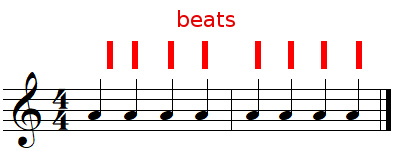
1 quarter note 

2 eighth notes 

4 sixteenth notes 

and so on...
Examples found in famous works
Mozart, Piano Sonata K545
W.A. Mozart's Piano Sonata K545 begins with a 

You will notice the use of an Alberti bass in this musical sample in C major.
Vivaldi, Autumn, The Fours Seasons
The movement entitled Autumn from The Fours Seasons by Vivaldi uses the 


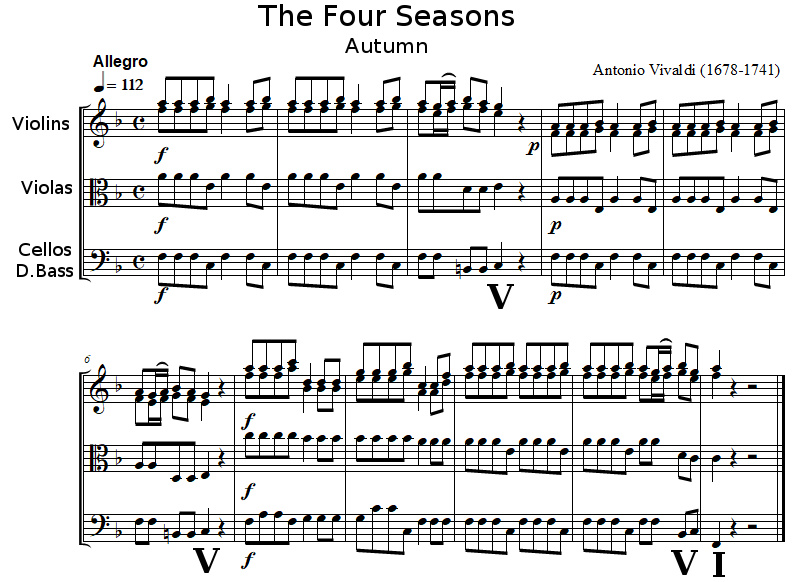
You will notice the two half-cadences (imperfect cadences 

Schubert, Ave Maria
Schubert's Ave Maria, originally titled Ellens Gesang III, Hymne an die Jungfrau is composed with the 4/4 time signature:
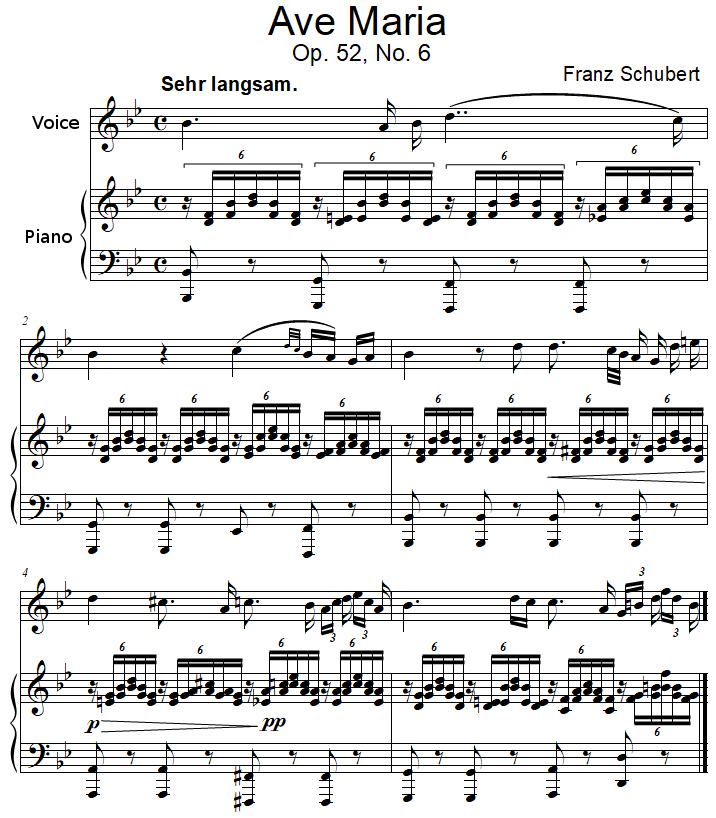
Royalty-free arrangement for violin and guitar (source, CC BY-NC-SA 4.0 license).
You will notice the use of arpeggios in sextuplets in this musical sample in B flat Major.
Dvořák, "From the New World", Largo
The second movement (Largo) from Antonín Dvořák's Symphony No.9 Opus 95, also known as "From the New World", uses 

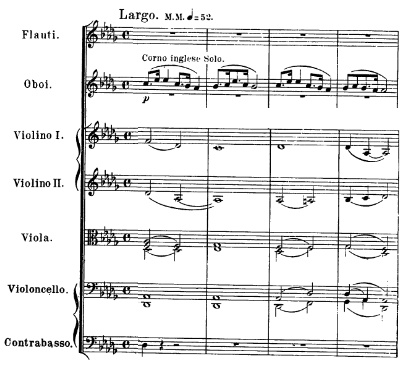
This musical sample was recorded in 2012 by The DuPage Symphony Orchestra's (source, CC BY-SA 3.0 US licence).
Ravel, Pavane for a Dead Princess
Pavane pour une infante défunte (Pavane for a Dead Princess) by Maurice Ravel (1875 - 1937) begins with a 4/4 time signature. Here is an musical sample arranged for piano, I strongly advise you to listen to the version for symphony orchestra because it is one of the most beautiful horn solo:
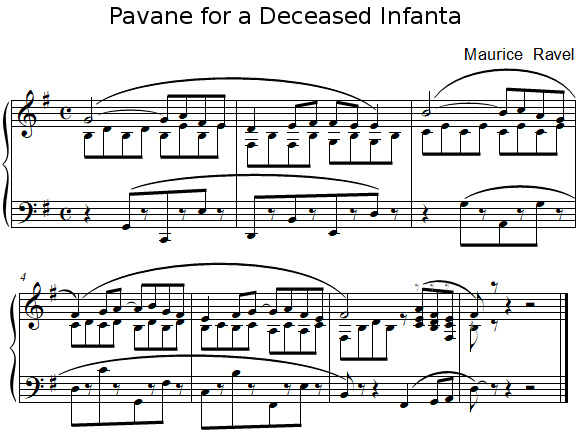
Frédéric Chopin, Nocturnes Opus 48 n°1
Frédéric Chopin's Nocturne Opus 48 n°1 in C minor, uses the 4/4 time signature:
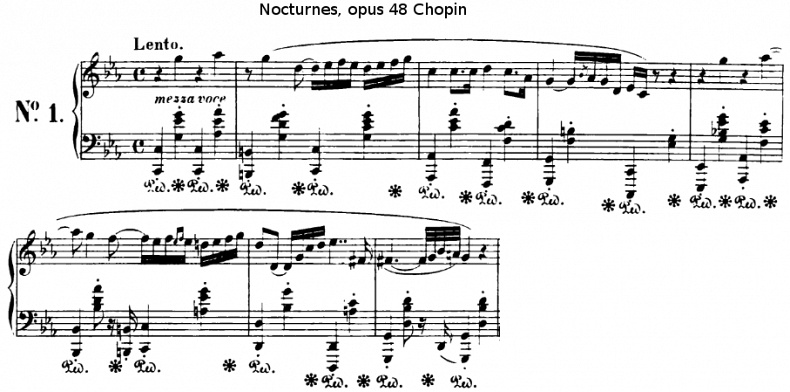
This royalty-free musical sample was recorded by Luke Faulkner (Source, Public Domain 1.0 license)
Pachelbel's Canon
Pachelbel's Canon also uses the 4/4 time signature:
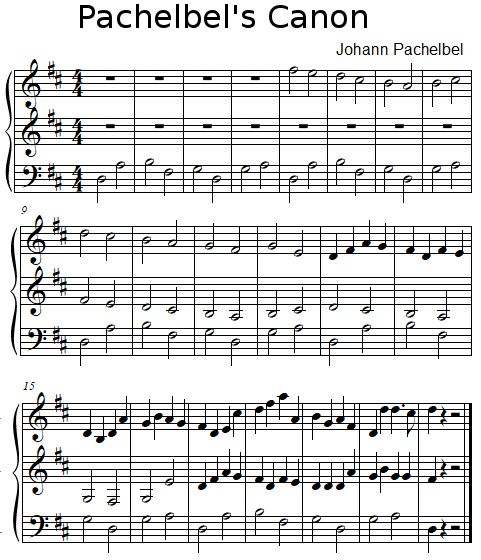
Beethoven, Moonlight Sonata
Piano Sonata N°14 ("Moonlight Sonata") by Beethoven also uses the 4/4 time signature:
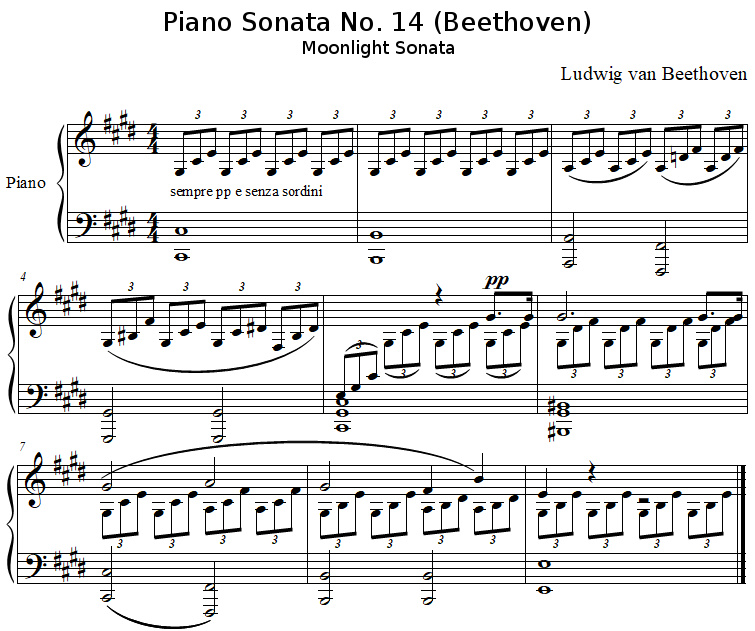
You will notice that Beethoven uses superposition of ternary rhythms (triplets) and binary rhythms (dotted eighth note / sixteenth note) which gives this piece a feeling of strangeness and instability.
Bach, Aria BWV 1068
The Aria from J.S. BACH's Suite No. 3 in D major BWV 1068, uses the 4/4 time signature. Here is a royalty-free musical sample recorded in 1954 by the Cleveland Orchestra conducted by George Szell (Source, CC BY-NC-SA 3.0 license):
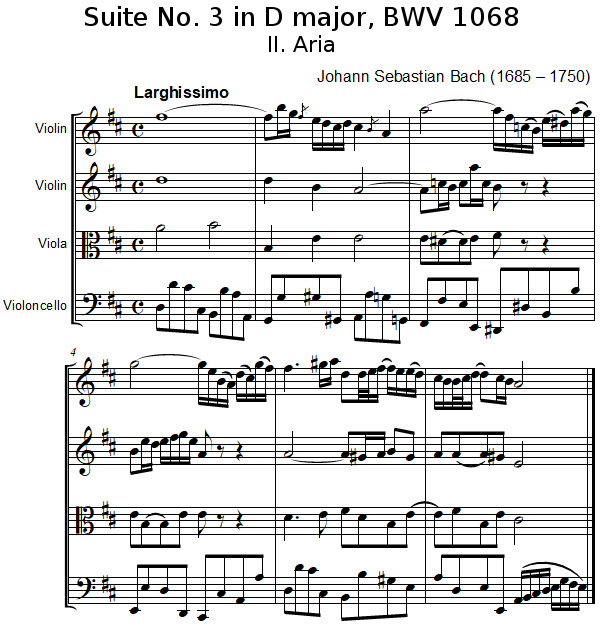
Mozart, The Magic Flute
Mozart's Overture to The Magic Flute (in E flat major) uses the 4/4 time signature:
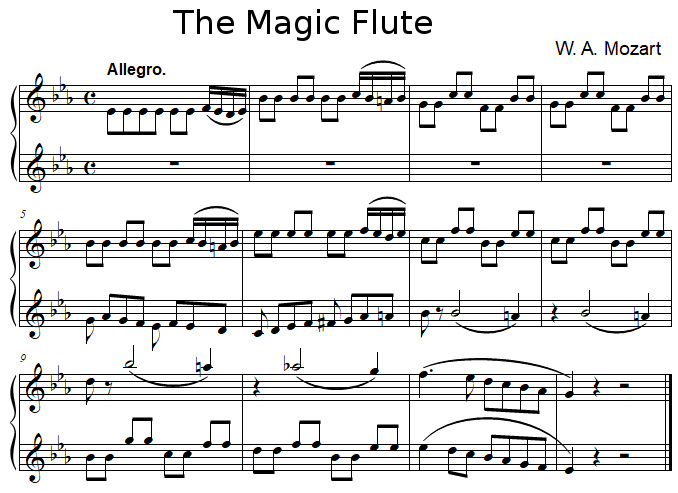
Mozart, Introitus from Requiem
The introduction to the Requiem in D minor K. 626 by Wolfgang Amadeus Mozart uses the 4/4 time signature:
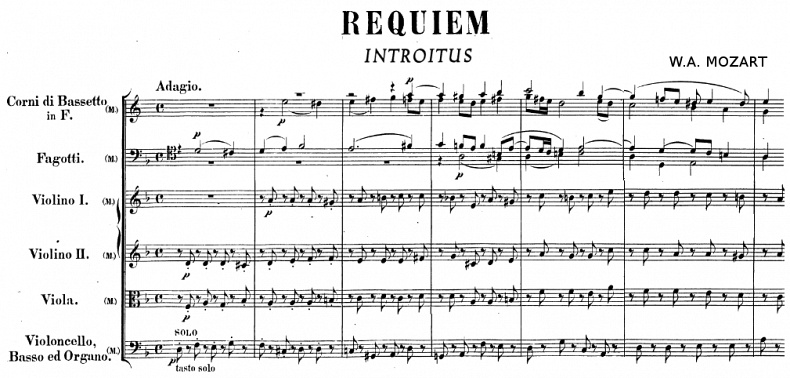
This royalty-free musical sample was recorded in 1951 by the Wiener Philharmoniker orchestra conducted by Josef Krips (source, Creative Commons Zero 1.0 license).
You will notice the Adagio indication, and the use of basset horns in the instrumentation.
Brahms, Sonate in E minor opus 38
The first movement Allegro non troppo from Cello Sonata N°1 in E minor, Opus 38 by Johannes Brahms uses the 4/4 time signature:
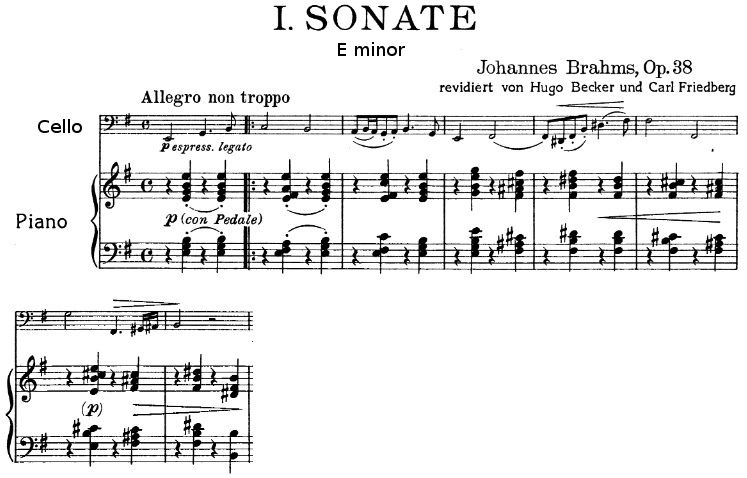
This royalty-free musical sample was recorded by Wendy Warner on cello and Eileen Buck on piano (source, CC BY-NC-ND 3.0 license).
You will notice the indication Allegro non troppo, and the piano that plays exclusively offbeats.



Thanks a lot for your support to us music students
Reply to this/these comment(s)